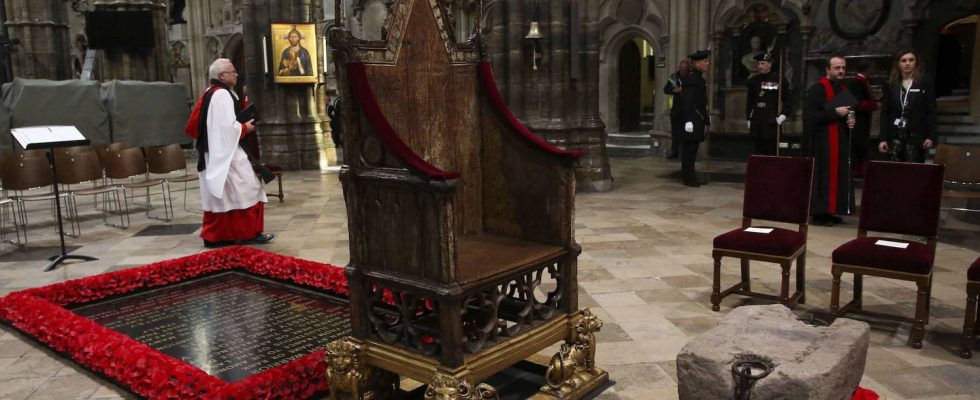Among the traditions of the coronation ceremony of Charles III is the “Stone of Destiny”. A block of sandstone that has played a major role in crownings for centuries.
As Charles III’s coronation ceremony takes place this Saturday, May 6, preparations are well under way for a day associated with specific objects and traditions within the framework of the British monarchy. The event, which should attract a large audience from all over the world, will involve an object whose history dates back almost a thousand years: the stone of destiny. Recently moved from Scotland’s Edinburgh Castle to London in preparation for the coronation, the stone is a sacred and ancient symbol of the Scottish monarchy, used for centuries at the investiture of kings and queens.
This red sandstone slab weighing 150 kg is also known as the “Stone of Scone” or the Coronation Stone. The Stone of Destiny has unknown origins, although there are many hypotheses about its history, some of which date back to biblical times. It was originally kept at Scone Abbey, near Perth, which unfortunately no longer exists. Legend has it that the stone was transported from the Holy Land through Egypt, Sicily, Spain and Ireland by before being kept in a monastery in Scone, Scotland in the 9th century.
Scottish origins
It would have been used for the coronation of Scottish kings. Many of these ceremonies took place at Scone Palace in the city of Perth, Scotland, hence the stone’s name. It is sitting on this stone that monarchs were enthroned kings. At first, Scottish kings did not wear crowns or other regalia. The stone, one of the few objects present at coronations, has therefore become an important symbol of Scottish royalty, representing a pedestal for the kingdom.
In 1296, King Edward I of England stole the stone from the Scots and had it incorporated into a new throne at Westminster, known as “King Edward’s Chair”. It was incorporated into a small section below the wooden coronation chair, commissioned in 1308 for Westminster Abbey in London. This chair has been used in the coronation ceremonies of English and British monarchs since Henry IV in 1399. It was also used in the coronation of Elizabeth II.
A damaged stone
It also happened that the stone disappeared or was damaged. At the beginning of the 20th century, women campaigning for the right to vote in the country, detonated a bomb near the chair, which damaged both the chair and the stone.
On Christmas Day 1950, four Scottish nationalist students removed the stone from Westminster Abbey. Three months later, it is found almost 800 kilometers away, in Arbroath Abbey, Scotland, a building long associated with Scottish independence, since it was there that Scottish nobles swore their independence from England in the 14th century. The stone was therefore embroiled in the cause of Scottish nationalism. In 1996 the stone was officially returned to Scotland.
